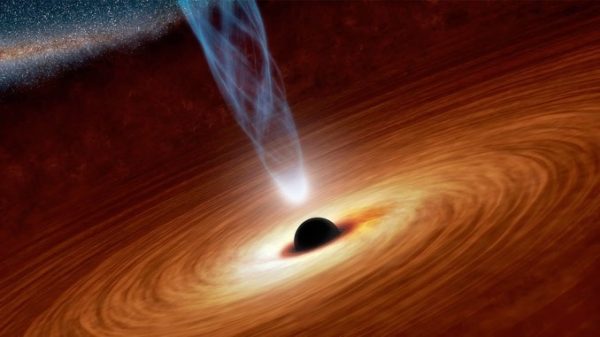How to ‘seed’ supermassive black holes in the early universe – Astronomy Now Online

A major question mark about the evolution of the early universe is how supermassive black holes managed to form in the first 800 million years or so of the Big Bang. According to conventional wisdom, supermassive black holes form in the central regions of a galaxy and grow primarily by capturing surrounding gas, a process that occurs over long time scales.
But doctoral student Lumen Boco and his advisor Andrea Lapi, both at the Scuola Internazionale Superiore di Studi Avanzati (International School for Advanced Studies) in Trieste, Italy, say they have been able to show, through an analysis published in The Astrophysical Journal, that earlier models for accelerated growth are, in fact, possible.
They began with early galaxies, progenitors of more evolved elliptical galaxies, with a very high gas content.
Such galaxies would have hosted extremely intense waves of early star formation, giving birth to massive suns that quickly burned through their nuclear fuel, exploded in supernova blasts and collapsed to form stellar-mass black holes. The dense gas in those galaxies would have caused them to migrate inward toward the centre of their host galaxy where they could merge to form the “seed” of a supermassive black hole.
“The biggest stars live a short time and very quickly evolve into stellar black holes, as large as several scores of solar masses,” Boco and Lapi write. “They are small, but many form in these galaxies. Our numerical calculations show that the process of dynamic migration and fusion of stellar black holes can make the supermassive black hole seed reach a mass of between 10,000 and 100,000 times that of the Sun in just 50-100 million years.”
Staring from such an initially massive seed, the black hole’s growth by accretion of surrounding gas is accelerated, explaining the presence of such massive black holes in the early universe.
“Starting from such a big seed as envisaged by our mechanism speeds up the global growth of the supermassive black hole and allows its formation … in the young universe. In
short, in light of this theory, we can state that 800 million years after the Big Bang the supermassive black holes could already populate the Cosmos.”
While their conclusion is based on a mathematical analysis, Boco and Lapi say their theory can be tested.
“The fusion of numerous stellar black holes with the seed of the supermassive black hole at the centre will produce gravitational waves, which we expect to see and study with current and future detectors,” the researchers said.





